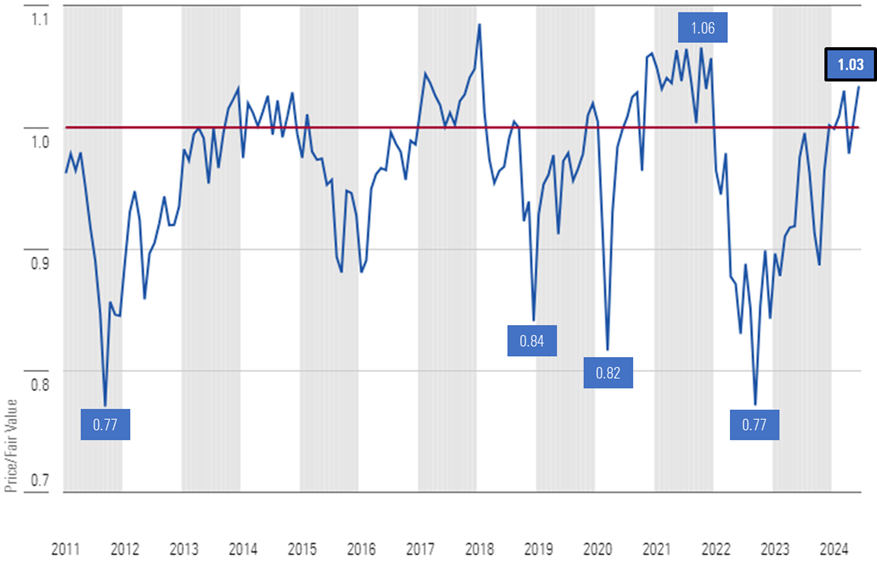20 Free Tips On Choosing AI Stock Investing Analysis Websites
20 Free Tips On Choosing AI Stock Investing Analysis Websites
Blog Article
Top 10 Suggestions For Assessing The Quality Of Data And Sources For Ai Trading Platforms That Predict/Analyze Price Of Stocks.
For AI-driven trading and stock prediction platforms to deliver reliable and accurate insights it is vital to evaluate the accuracy of the data they use. Insufficient data could lead to poor forecasts or financial losses. It can also cause a mistrust of the system. Here are the top 10 ways to assess the quality of data and sources:
1. Verify the data sources
Check where the data comes from: Be sure to make use of reputable and well-known data providers.
Transparency: The platform should be transparent about the sources of its data and update them regularly.
Don't rely solely on one platform: trustworthy platforms typically combine data from multiple sources to lessen bias.
2. Assess Data Freshness
Data that is delayed or real-time? Determine whether the platform provides actual-time or delayed data. Real-time data is essential for trading that is active. However, data that is delayed can be adequate to be used for long-term analysis.
Be sure to check the frequency of updates (e.g. minute-by-minute updates, hourly updates, daily updates).
Accuracy of historical data - Check that all historical data is consistent and without gaps or anomalies.
3. Evaluate Data Completeness
Find out if there is missing or incorrect information.
Coverage. Make sure that the platform is able to offer a range of stocks, markets and indices that are relevant to your trading strategy.
Corporate actions: Make sure that your platform allows stock splits and dividends along with mergers and other corporate events.
4. Test Data Accuracy
Cross-verify data: Compare data on the platform against other sources of data you trust to assure the accuracy of the data.
Error detection: Search for outliers, incorrect price points, or mismatched financial metrics.
Backtesting: Use historical data to test trading strategies back and determine whether the results match with the expectations.
5. Measure Data Granularity
Detail - Make sure you can find the most precise information, such as intraday volumes, prices, bid/ask spreads, and order books.
Financial metrics: Check if your platform offers detailed financial reports (income statement and balance sheet) and key ratios such as P/E/P/B/ROE. ).
6. Make sure that you are checking for data cleaning and Processing
Normalization of data - Make sure that your platform normalizes your data (e.g. making adjustments for splits or dividends). This helps help ensure consistency.
Outlier handling - Check out the way your platform handles anomalies or data that is not outliers.
Incorrect data: Determine whether the platform has reliable methods to fill in the missing data points.
7. Assess Data Consistency
Aligning data with the correct time zone. To prevent discrepancies, ensure that the data in all files is synced with each other.
Format consistency - See if data are presented in the same way (e.g. units and currency).
Cross-market compatibility: Ensure that data from different exchanges or markets is aligned.
8. Assess Data Relevance
Relevance to your trading strategy The data you're using is in accordance with your trading style (e.g. analytical techniques, qualitative modeling and fundamental analysis).
Feature selection: Check whether the platform has relevant features (e.g., sentiment analysis, macroeconomic indicators or news data) that can help improve predictions.
Verify the security and integrity of your information
Data encryption - Ensure that your platform is using encryption to secure data during transmission and storage.
Tamper proofing: Ensure that the data on the platform isn't being altered.
Make sure that the platform must be in compliance with data protection regulations.
10. Test the platform's AI model transparency
Explainability. Be sure to understand how the AI uses data to make predictions.
Bias detection: Determine that the platform monitors, and mitigates, biases that exist within the data or models.
Performance metrics: To evaluate the reliability and accuracy of predictions, analyze the performance metrics of the platform (e.g. accuracy, precision recall, accuracy).
Bonus Tips:
Reviews and feedback from users Utilize user reviews and feedback to evaluate the trustworthiness of a website and the accuracy of its data.
Trial period: Take advantage of an unpaid trial or demo to try the data quality of the platform and features prior to signing.
Support for customers - Ensure that the platform has the capacity to provide robust customer support to solve any data-related problems.
Follow these tips to assess the source of data and the quality for AI stock prediction platforms. Make educated decisions regarding trading based on this information. Have a look at the recommended using ai to trade stocks info for site examples including ai stock market, ai trading, ai trading tools, chart ai trading assistant, ai for investing, ai for stock trading, ai stock market, ai investment platform, ai for investment, ai for investing and more.
Top 10 Tips For Evaluating The Risk Management Of Ai Stock Forecasting/Analyzing Trading Platforms
Risk management is an important element of every AI trading platform. It assists in protecting your investment while minimizing the risk of losses. A platform with strong risk management tools will assist you in navigating market volatility and make well-informed choices. Here are the top 10 tips for assessing the risk management capabilities of these platforms. capabilities:
1. Check out Stop-Loss and Take Profit Features
Customizable Levels: Be sure the platform allows you to create individual stop-loss limits and targets for take-profits in strategies or trades.
Check whether the platform allows the use of trails stops. They automatically adapt themselves when markets shift in your direction.
Guaranteed stops: Check if the platform offers guaranteed stop-loss orders, which guarantee that your position will be closed at the price you specified, even in volatile markets.
2. Instruments for assessing position Size
Fixed amount: Ensure that the platform lets you define the positions you want to take based upon a sum of money that is fixed.
Percentage of Portfolio Find out whether it is possible to establish the size of your position as a percentage of your portfolio total so that you can manage risk proportionally.
Risk-reward-ratio: Verify whether the platform lets users set individual risk/reward ratios.
3. Look for Diversification Support
Multi-asset Trading For diversification of your investment portfolio, ensure that the trading platform you choose supports trading in multiple asset classes.
Sector allocation check to determine whether there are any tools that allow for monitoring and managing exposure to the sector.
Diversification of geographic areas. Verify whether the platform can trade internationally and spread geographic risks.
4. Examine the Margin and Leverage Controls
Margin requirements. Be aware of the requirements for margin prior to trading.
Check for leverage limits. You can utilize this option to manage the risk you take.
Margin Calls: Verify that the platform has sent promptly notifications about margin calls in order to avoid liquidation of your account.
5. Assess the risk Analytics Reporting
Risk metrics: Ensure that the platform includes the most important risk-related metrics, such as Value at Risk, Sharpe ratio and Drawdown, for your portfolio.
Assessment of scenarios: Determine whether you are able to simulate different scenarios of markets on the platform to evaluate possible risks.
Performance reports: Make sure the platform offers you comprehensive reports on performance, as well as returns that are risk-adjusted.
6. Check for Real-Time Risk Monitoring
Portfolio monitoring. Make sure that your platform can monitor in real-time the risk of your portfolio.
Alerts and notifications - Verify that the platform sends out real-time alerts when risk events occur (e.g. Margin breaches and triggers for stop-loss orders).
Check for customizable dashboards that provide a comprehensive overview of your risk profile.
7. Test Stress Testing and backtesting
Stress testing - Make sure your platform allows you to stress test strategies and portfolios under extreme market conditions.
Backtesting. Find out if the platform permits backtesting. This is the use of data from the past to evaluate risk and performance.
Monte Carlo simulators: Verify that the platform is using Monte Carlo to simulate a range of outcomes that could occur to allow you to evaluate risks.
8. Risk Management Regulations: Assess your compliance
Compliance with regulatory requirements: Ensure that your platform is in compliance with the relevant risk management regulations in Europe and the U.S. (e.g. MiFID II).
Best execution: Make sure that the platform follows the most efficient execution practice, which ensures trades are executed at the lowest cost so as to limit any slippage.
Transparency. Check that the platform is clear and makes clear disclosures of risks.
9. Look for parameters controlled by the user.
Custom risk rules: Make sure the platform you select lets you create your own custom risk management rules.
Automated Risk Controls: Determine whether the system is able to enforce risk management policies based on predefined parameters.
Manual overrides: Make sure that the platform supports manual overrides during emergency situations.
Review Case Studies and User Feedback
User reviews: Conduct user studies to evaluate the platform's effectiveness in managing risk.
Testimonials and case studies They will showcase the capabilities of the platform for managing risk.
Community forums: Find out whether the platform hosts an active user community in which traders can share tips for managing risk and strategies.
Bonus Tips
Trial period for free: Experience the risk management capabilities of the platform in real-world scenarios.
Support for customers: Make sure whether the platform provides robust support in relation to questions or concerns relating to the management of risk.
Educational resources: See whether there are any educational resources that cover the best practices for risk management.
With these suggestions, you can assess the ability of an AI software for analyzing and predicting stocks to control risk. This will help you choose a platform that safeguards your investment and reduces any potential losses. Tools for managing risk that are robust are vital for trading in volatile markets. Follow the best stock predictor for more recommendations including ai in stock market, ai options, best ai stock prediction, best ai stock prediction, best ai trading platform, best ai stocks, best ai penny stocks, ai copyright signals, ai stock investing, ai stock prediction and more.